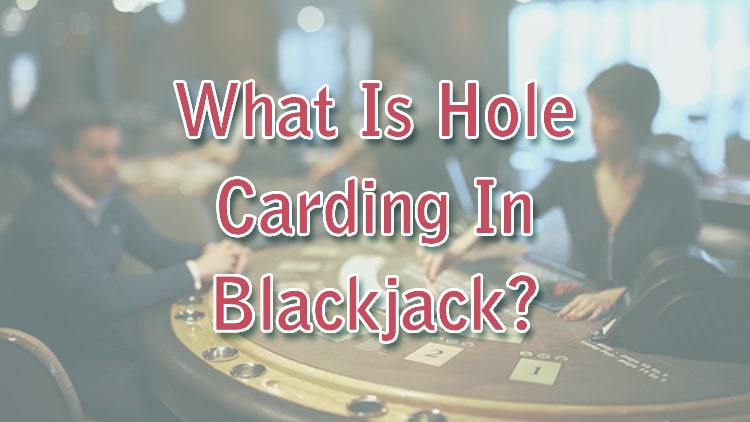
Welcome to Dove Casino, where the thrill of the game meets expert advice. Today, we're delving into the world of blackjack to uncover the mysteries of "Hole Carding," a concept that may be unfamiliar to beginners.
You'll learn about the "hole card" - the dealer's hidden card - and the intriguing strategy of hole carding, where players attempt to glimpse this concealed card to gain an advantage. Is it a clever tactic or crossing the line into cheating? Join us as we explore these questions, offering useful insights for both novices and seasoned players alike.
What Does Hole Carding Mean In Blackjack?
In blackjack, "Hole Carding" refers to the practice of trying to see the dealer's hidden card, known as the "hole card." This card is dealt face down and remains concealed until all players have completed their actions and it gets to the dealer's turn.
If a player can successfully determine what this hidden card is, they can make more informed decisions, potentially tilting the odds in their favour. Hole carding is about keen observation and sometimes exploiting moments when the dealer inadvertently reveals the card's value. This strategy can significantly influence the game's outcome, making it a topic of much interest among players.
What Is The Hole Card In Blackjack?
In blackjack, the "hole card" is a term that refers to one of the dealer's two initial cards; the one dealt face down and not revealed until players have made all their decisions. This element of mystery adds intrigue to the game, as the value of this hidden card can significantly affect the outcome.
For players, the challenge lies in making strategic decisions without knowing the hole card's value, relying instead on visible cards and statistical probabilities. Understanding the role of the hole card is crucial for anyone looking to grasp the basics of blackjack and develop effective playing strategies.
Hole Carding Blackjack Strategy
The Hole Carding strategy in blackjack involves players trying to catch a glimpse of the dealer's hidden card to gain an advantage. This technique is not about cheating but requires sharp observation skills.
Players look for moments when the dealer accidentally exposes the hole card's value during the dealing process. By knowing this card, players can make more informed decisions on whether to hit, stand, double down, or split. This insight significantly reduces the house edge. However, successfully applying this strategy requires practice and acute attention to detail, as opportunities to spot the hole card are rare and fleeting. It's a challenging yet rewarding tactic for those willing to refine their observational skills in the game of blackjack.
Is Hole Carding A Form Of Cheating?
Hole Carding often raises eyebrows, leaving many to wonder if it's a form of cheating. In reality, it walks a fine line between strategic play and unethical behaviour. However, it is not cheating in the strict sense.
This technique relies on the player's ability to observe and capitalise on a dealer's unintentional revealing of the hole card. It's about being attentive and using information that's inadvertently exposed to all at the table.
Since it depends on the dealer's mistake rather than manipulating the game or breaking rules, hole carding is considered a clever use of observation rather than an illicit act.
Casinos may not welcome it, and dealers are trained to minimise exposure, but players leveraging their observational skills in this way are not cheating. They are simply using available information to inform their decisions in the game.
What Is The No Hole Card Rule?
The No Hole Card rule in blackjack represents a variation of the game where the dealer does not receive their second card (the hole card) until after all players have made their decisions. Traditionally, dealers get two cards initially, with one face down (the hole card).
Under the No Hole Card rule, the dealer's actions are delayed, receiving the second card only after players have had their chance to hit, stand, double down, or split.
For players, this rule may not change much since they have the same amount of information to go off. This rule can increase the house edge slightly, but the only thing it really affects is card counting and Hole Carding.
Conclusion
To summarise, Hole Carding is a blackjack strategy where players try to observe the dealer's hidden card to gain an advantage. It's important to understand that this technique is not considered cheating; it merely involves taking advantage of a dealer's unintentional mistake.
While hole carding can provide an edge, players must remember they still need to play their hands wisely, and the dealer has their turn to play as well. The uncertainty of what cards will be drawn next adds to the game's thrill, emphasising that, even with a potential advantage, blackjack retains an element of chance.
